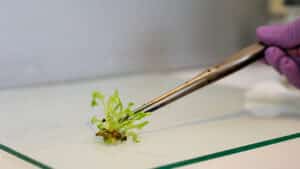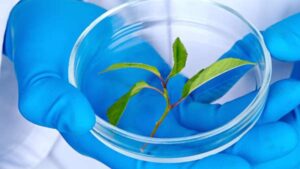Belgian researchers from VIB-KULeuven Center for Microbiology and VIB-UGent Center for Plant Systems Biology have introduced a novel set of 16 distinct short DNA sequences, according to a press release from VIB-Ugent Center for Plant Systems Biology.
These sequences enable precise and controlled recombination events within any genome. This newly patented toolbox, which complements and in certain applications exceeds CRISPR, is now accessible to researchers and industry professionals in genome engineering. The findings are detailed in two simultaneous papers published today in the journal Nature Communications.
According to the release, site-specific recombinases enable efficient cutting and pasting of DNA at specific locations in the genome, where each recombinase recognizes one precise DNA sequence. Due to their sequence-specificity, CRISPR systems have overshadowed site-specific recombinases in the past decade as a genome engineering tool.
CRISPR systems sparked a revolution in the field due to their ability to be easily targeted to various genomic loci. However, site-specific recombinases offer an alternative approach, bypassing some of CRISPR’s major challenges. These include mitigating issues such as the toxicity associated with DNA double-strand breaks, which can lead to unintended point mutations and structural variations. Additionally, site-specific recombinases address the low editing efficiencies encountered in many non-conventional organisms and non-dividing cells, as well as the difficulty in inserting large DNA fragments. Moreover, the complex patent landscape surrounding CRISPR often makes its utilization in research and industry both cumbersome and costly.
The research teams from VIB-KULeuven Center for Microbiology and their counterparts at VIB-UGent Center for Plant Systems Biology have now addressed the shortcomings of earlier site-specific recombination as a means for genomic engineering. They have enhanced the toolbox utilizing a viral recombinase (Cre) to now enable the specific recognition, cutting, and pasting of multiple DNA sites. Identifying a set of 16 sites that efficiently recombine exclusively with their corresponding site within the set, the team has achieved this across various organisms.
“Due to these orthogonal recombination systems, we can avoid the unpredictable way in which multiple recombination sites in a genome interact with each other,” said Professor Kevin Verstrepen, director of VIB-KU Leuven Center for Microbiology. “This opens routes for many research projects to install many small or large genomic edits simultaneously or to recycle markers repeatedly during genome engineering efforts.”
Applications for Research and Industry
The release noted that Charlotte Cautereels, PhD student at the lab of Kevin Verstrepen, established the new toolbox in yeast and tested these in bacterial cells, and collaborated with the VIB-UGent PSB center to also demonstrate its efficiency in plant cells. In her latest publication, she demonstrates how it can be used to optimize the expression of metabolic pathway genes and production titers of industrially relevant molecules. A single round of shuffling dedicated gene regulators with the new recombination sites already doubled the production titers.
“We corroborated that modifying expression through our recombination-based setup allows for rapid and efficient gene expression optimization in heterologous biosynthetic pathways,” said Cautereels. “Not only does this new toolbox offer possibilities to improve microbial cell factories, it also validates our toolbox for scientists and industry working in the field of genome engineering.”













